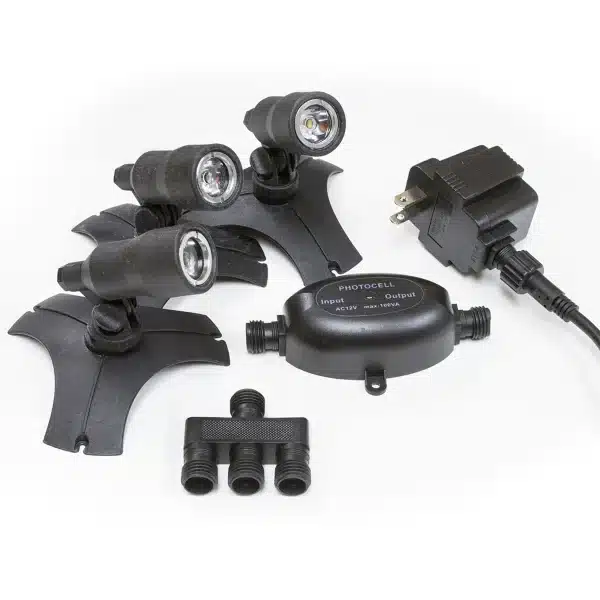Introduction
Fountains, with their flowing water and mesmerizing presence, have always held a special place in human imagination. In literature, they often serve as symbols of life, renewal, passion, or mystery. On stage, they become living set pieces that heighten emotion, create atmosphere, and dazzle audiences with theatrical ingenuity. This blog explores the role of fountains in both literature and theater performances, uncovering how writers and directors alike harness their power to enchant audiences and readers.
The Symbolism of Fountains in Literature
Eternal Flow and Renewal
In literary works, fountains often symbolize life’s eternal flow. They are sources of rejuvenation, places where weary travelers or heroes find strength, or metaphors for the unending cycle of existence. Writers use fountains to connect characters with nature’s rhythm and universal truths.
Fountains as Symbols of Desire and Mystery
In poetry and prose, fountains sometimes take on sensual or mysterious qualities. Their bubbling waters echo emotions simmering beneath the surface, hidden desires, untold secrets, or spiritual awakenings. Many love stories set in gardens or palaces feature fountains as backdrops to romantic encounters.
Religious and Mythological Connotations
Fountains frequently appear in mythological retellings. Ancient Greeks associated springs and fountains with nymphs and gods, while Christian literature often portrays fountains as holy, cleansing waters. In Dante’s Divine Comedy, for example, rivers and flowing waters act as spiritual purifiers for the soul’s journey.
Iconic Fountains in Literary Works
1. The Fountain of Youth
One of the most enduring images in literature is the Fountain of Youth—a mythical spring said to restore youth and vitality. From medieval legends to Washington Irving’s tales, it represents humanity’s eternal search for immortality and renewal. Writers use it to question the price of eternal life and the meaning of aging.
2. Fountains in Shakespeare
Shakespeare often employed fountains as imagery and stage references. In Othello, fountains of tears symbolize grief. In Romeo and Juliet, garden settings with implied fountains evoke secrecy, love, and longing. Shakespeare’s use of flowing water reflects both abundance and the uncontrollable forces of passion.
3. Romantic-Era Gardens and Fountains
Writers of the Romantic era adored fountains. They appear in works by Goethe, Byron, and Shelley as emblems of untamed beauty and human yearning. Fountains in Romantic poetry often blur the boundary between artifice and nature, celebrating both the wildness of water and the elegance of crafted stone.
4. Modern Literature and Urban Fountains
Contemporary literature often situates fountains in cityscapes, public squares where characters meet, reflect, or experience pivotal moments. Fountains like those in Milan, Paris, or New York become communal spaces, symbolizing both the loneliness and connection of urban life.

Theatrical Uses of Fountains
The Stage as a Living Landscape
Theater thrives on spectacle, and fountains provide a natural blend of realism and fantasy. On stage, a fountain may be literal, constructed with hidden pumps and lighting—or symbolic, represented by sound, choreography, or projection. Directors use fountains to transform the stage into a garden, palace, or dreamscape.
Baroque and Renaissance Theater
In early European theater, fountains were prominent in court performances. Italian Renaissance productions often featured elaborate waterworks in outdoor theaters, merging engineering with artistry. Audiences marveled at flowing fountains that symbolized divine power and royal wealth.
Opera and Grand Theater
Opera houses, known for lavish staging, often incorporate fountains into their set designs. In La Traviata and Don Giovanni, fountains or implied water features heighten romantic tension. Productions of Wagner or Strauss sometimes employ fountains as part of mythical landscapes, blending sound, light, and water effects.
Modern and Experimental Theater
Contemporary directors frequently reimagine fountains in abstract ways. For example, a simple trickle of water on stage might stand for an entire city’s life source. In avant-garde performances, fountains can become metaphors for industrialization, climate change, or memory itself.
Iconic Stage Performances Featuring Fountains
1. The Globe and Shakespearean Gardens
Shakespeare’s plays, when performed in reconstructed theaters like The Globe, sometimes integrate fountains or water sounds to recreate the atmosphere of Elizabethan gardens. Even when implied, the presence of a fountain enriches the emotional tapestry of the scenes.
2. 19th-Century Opera Spectacles
In Paris and Vienna, 19th-century operas often included stage fountains with real water. Productions of Faust or Aida showcased fountains to awe audiences and symbolize luxury or divine presence. These technical marvels were as much about impressing viewers as about advancing the story.
3. Broadway and West End Innovations
Modern musicals sometimes experiment with water on stage. Productions like Singing in the Rain famously use flowing water as part of choreography. While not always fountains in the traditional sense, these watery spectacles continue the tradition of blending performance with fluid movement.
4. Experimental Installations
Avant-garde companies like Robert Lepage’s Ex Machina or immersive theater troupes use fountains as interactive set pieces. Audience members might walk through misting fountains or encounter symbolic water sculptures within performance spaces, blurring the line between theater and installation art.
The Technical Magic of Stage Fountains
- Engineering Marvels: Creating indoor fountains on stage requires clever engineering. Designers conceal pumps, reservoirs, and lighting systems beneath sets. Water must circulate safely, without damaging costumes or creating hazards. Some productions even use recycled water systems to remain eco-friendly.
- Lighting and Projection: Stage lighting transforms fountains into living sculptures. Colored gels or LED systems make water shimmer in blues, golds, or fiery reds. Modern productions also use projections—digital fountains that cascade across backdrops, blending physical and virtual design.
- Sound Design: The gentle trickle or dramatic rush of water can be recreated through live fountains or sound design. Designers often amplify or modulate water sounds to evoke calm, suspense, or intensity, depending on the scene.
Cultural Significance of Fountains in Performance
- Royal Power and Prestige: In both literature and stage, fountains often signify wealth and authority. Grand palace fountains in plays or novels symbolize a ruler’s control over nature and resources. On stage, reproducing such fountains demonstrates the theater’s ability to rival real-life splendor.
- Love and Tragedy: Fountains frequently serve as romantic backdrops. Lovers meet by fountains, or part ways under their flowing streams. In tragedies, fountains sometimes symbolize tears or blood, transforming into metaphors for loss and grief.
- Transformation and Mystery: Fountains in both literature and theater can represent thresholds—places where transformation happens. Characters may change their fates near fountains, or audiences may witness shifts in mood and meaning when fountains appear on stage.
- Fountains as Characters in Their Own Right: In certain works, fountains transcend their role as mere scenery to become almost characters themselves. They “speak” through sound and presence, shaping the mood of a story. For instance, in T.S. Eliot’s The Waste Land, water imagery, including fountains, functions as an active force, commenting on renewal, decay, and modern life. On stage, a fountain’s behavior—overflowing, still, frozen—can mirror the emotional state of the characters.
The Timeless Allure of Fountains
Fountains continue to captivate because they bridge the natural and the manmade, the practical and the poetic. In literature, they invite readers into worlds of symbolism, desire, and renewal. On stage, they thrill audiences with their visual and auditory presence, embodying both technical artistry and timeless beauty. Whether in the written word or live performance, fountains flow through culture as symbols of human longing and artistic expression.
Conclusion
From Shakespearean plays to modern operas, from mythic tales to contemporary novels, fountains remain powerful motifs in literature and theater. They embody renewal, passion, and mystery, while also providing stunning opportunities for artistic innovation on stage. As long as human beings remain captivated by flowing water and the metaphors it inspires, fountains will continue to grace both the pages of books and the boards of theaters worldwide.






